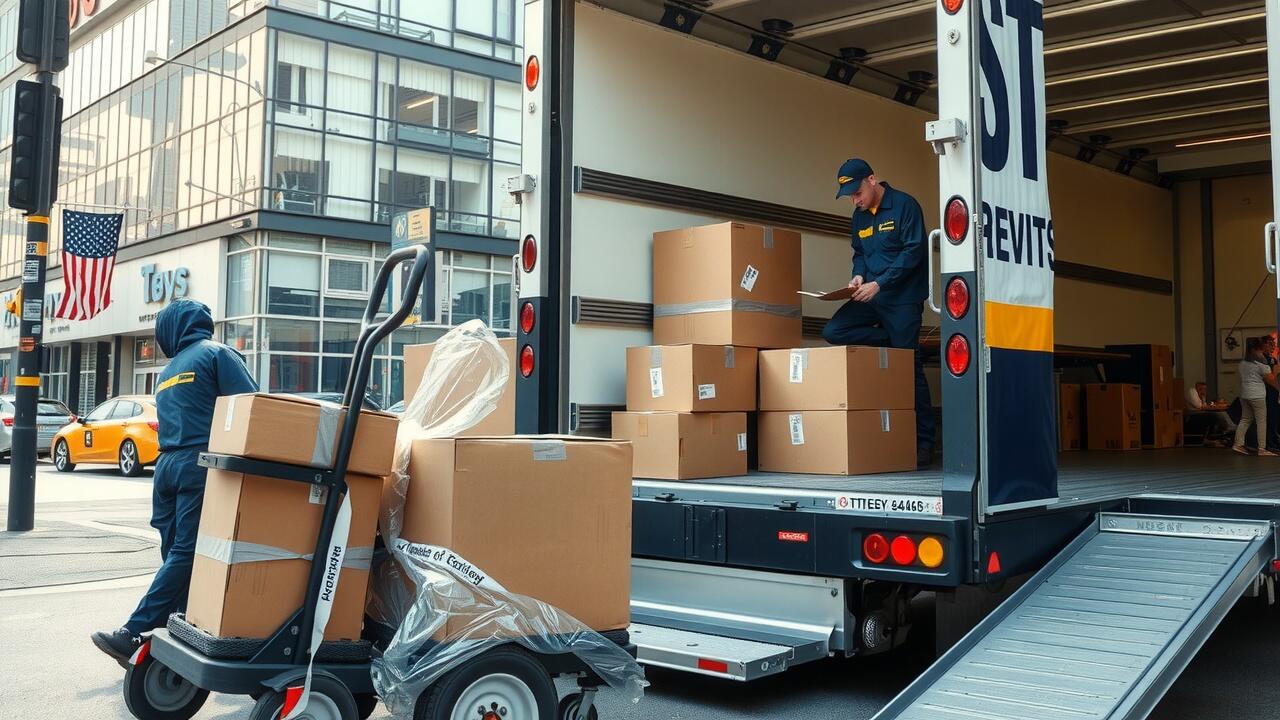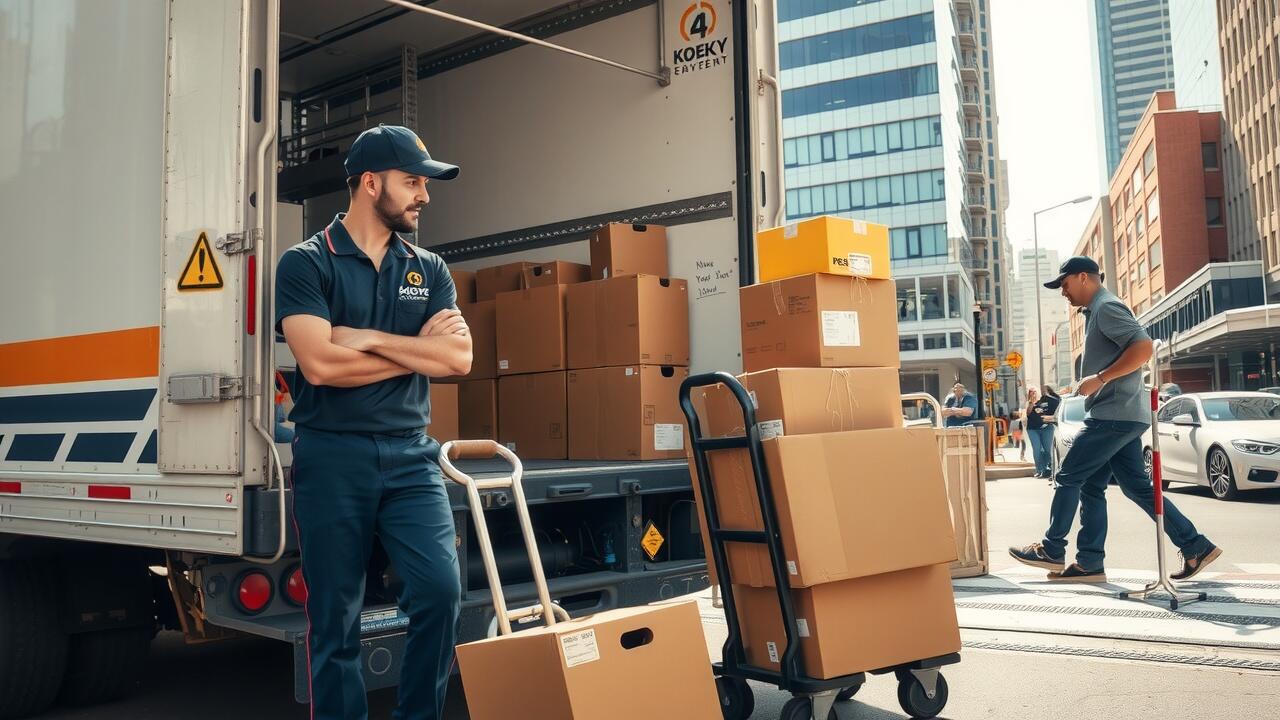
Table Of Contents
Packing Strategies
Effective packing strategies are essential for a smooth transition during commercial moving in New York, United States. Begin by creating a comprehensive inventory of all items to be packed. Group similar items together, which simplifies unpacking and helps ensure nothing gets lost. Using clear labeling on boxes can provide immediate insight into their contents and designate which items are fragile or require special handling. Proper organization minimizes confusion on moving day and streamlines the overall process.
When packing, it is critical to use appropriate packing materials that offer protection during transport. Invest in high-quality boxes, bubble wrap, and packing peanuts to safeguard items from damage. Consider the size and weight of each item when selecting packing materials. Larger items may require sturdier boxes, while delicate pieces need more cushioning. Prioritizing the choice of materials ensures that everything arrives at the new location intact, further facilitating a successful commercial move.
Using Appropriate Packing Materials
Selecting the right packing materials is crucial for any commercial moving in New York, United States. Sturdy boxes are essential to protect items from damage during transit. Remember to choose various box sizes to accommodate different types of equipment and office supplies. Bubble wrap, packing peanuts, and foam sheets provide extra cushioning for fragile items, ensuring they arrive at the new location in one piece. Consider using heavy-duty tape to securely seal boxes, which will help prevent any accidental openings during the move.
Labeling each box with its contents and designated location in the new office can streamline the unpacking process. Utilizing clear plastic containers for frequently used items allows for easy access without rummaging through multiple boxes. It's also wise to have a toolkit on hand for assembling or disassembling furniture as needed. Proper packing strategies can significantly reduce the stress associated with commercial moving in New York, United States, making the transition smoother for everyone involved.
Managing Utilities and Services
Managing utilities and services is a critical factor in the commercial moving process. Businesses must carefully plan the disconnection and reconnection of essential services such as electricity, water, internet, and phone lines. Notifying service providers well in advance can help ensure that services are appropriately scheduled to coincide with the move. This proactive approach minimizes downtime and disruptions to daily operations during the transition.
In the context of commercial moving in New York, United States, understanding the local utility landscape is crucial. Different neighborhoods may have varying providers and service options, so researching what is available in the new location can lead to better choices. Additionally, creating a checklist of all utility accounts and ensuring all necessary paperwork is completed can streamline the process, helping to avoid last-minute hassles on moving day.
Scheduling Ahead of Time
Planning a commercial move requires careful scheduling to ensure all logistics align seamlessly. Start by creating a detailed timeline that outlines each phase of the move, from the initial packing to the final set-up in a new location. This timeline should accommodate necessary preparations and any adjustments that may arise. By breaking the process into manageable steps, businesses can maintain workflow continuity while minimizing disruptions.
When coordinating schedules with vendors and service providers, it's essential to communicate early and clearly. Booking movers, setting up utility transfers, and any other required services should be done well in advance. This is particularly important for commercial moving in New York, United States, where logistics can be complex due to high demand and local regulations. Advance scheduling can help prevent last-minute issues that may arise, ensuring a smoother transition to the new location.
Navigating NYC Regulations
Navigating the regulations for commercial moving in New York, United States can be complex. Local laws may require specific permits for moving trucks, especially if they will occupy a public space. Each borough has its own set of rules, which means it's essential to research the particular requirements of the area where the move will occur. Ignoring these regulations can lead to fines and complicate the moving process.
Another important aspect of the regulatory landscape involves parking restrictions and street closures. Understanding the timing of these regulations is crucial for a smooth transition. Consider the impact of construction or special events in the neighborhood, as they can also affect your moving plans. Adhering to these rules not only ensures compliance but also helps maintain a good relationship with local authorities.
Understanding Permits and Restrictions
When planning a commercial move in New York, it's essential to familiarize yourself with local permits and restrictions. New York City has strict regulations regarding street use, particularly for loading and unloading. Businesses must understand when and where they can place moving trucks without violating parking rules. Specific areas may require permits for street closures or the use of public space, and it's crucial to apply for these well in advance of the moving date.
Understanding these regulations can save time and prevent fines during the moving process. It is advisable to check in with the local authorities to ensure compliance. Failure to adhere to the city’s requirements can lead to unnecessary delays and additional costs. For anyone involved in commercial moving in New York, United States, navigating these rules becomes an integral part of a successful transition to a new location.
FAQS
What are some effective packing strategies for a commercial move in NYC?
Effective packing strategies include sorting items by category, labeling boxes clearly, and using appropriate packing materials to protect fragile items. Creating an inventory list can also help track belongings during the move.
What packing materials are recommended for moving a commercial office?
Recommended packing materials include sturdy boxes, bubble wrap, packing peanuts, tape, and labels. Additionally, using furniture pads and stretch wrap can protect larger items and prevent damage during transit.
How far in advance should I schedule utilities and services for my move?
It's best to schedule utilities and services at least 4-6 weeks in advance of your move. This ensures that you have all necessary services set up at the new location before you arrive.
What are the key NYC regulations I should be aware of when moving my business?
Key NYC regulations to consider include traffic rules, street usage permits, and any restrictions on moving during peak hours. It's important to check with local authorities about any specific regulations that may affect your move.
Do I need any permits for a commercial move in NYC?
Yes, you may need permits for street usage or parking if your move involves loading or unloading on a public street. Checking with the NYC Department of Transportation for specific permit requirements is recommended.
